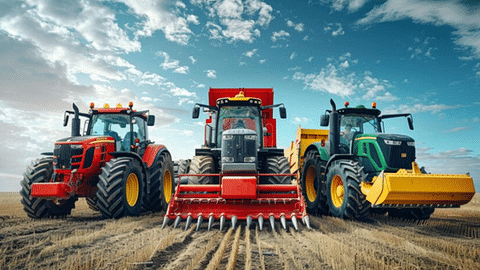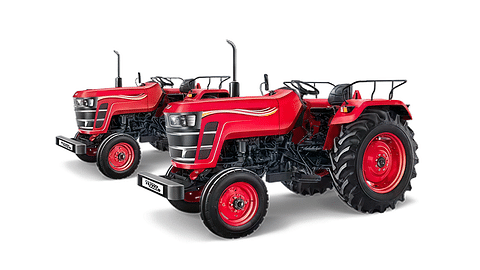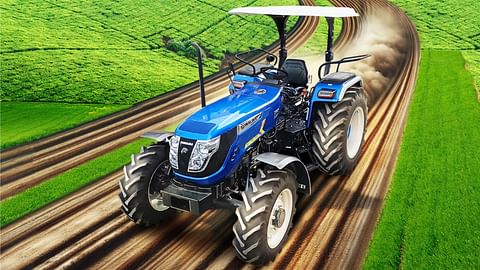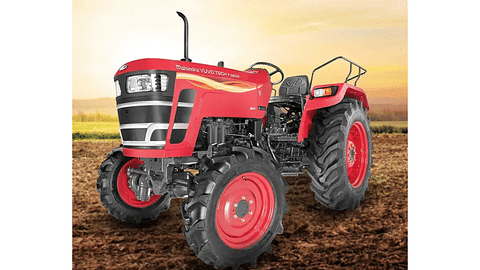A Farmer's Choice: Why Mahindra Tractors Are Trusted Across Generations

Mahindra & Mahindra Limited, one of the largest manufacturers of tractors in the world, has played a pivotal role in shaping the agricultural landscape in India and beyond. Established in 1945, Mahindra's journey in the tractor sector is a tale of innovation, resilience, and commitment to farmer empowerment. This article delves into the history of Mahindra tractors, their first model, the evolution of the company over the decades, and the reasons behind its dominant market share.
Inception of Mahindra Tractors
Founding Years
Mahindra & Mahindra was founded in 1945 by brothers JC Mahindra, KC Mahindra, and Ghulam Muhammad as a steel trading company in Ludhiana, Punjab. In the early 1950s, the company pivoted to automotive manufacturing, assembling Jeep vehicles under license from Willys, USA. This transition laid the groundwork for Mahindra's eventual foray into the agricultural sector.

The First Tractor: Mahindra 20 HP

In 1963, Mahindra launched its first tractor, the Mahindra 20 HP, based on a licensed model from the U.S. The introduction of this tractor was significant, as it catered specifically to the needs of Indian farmers, offering durability and reliability at a time when mechanization in agriculture was just beginning to gain traction. The Mahindra 20 HP was designed to withstand the rugged Indian terrains and climates, making it an instant favorite among farmers.
Evolution of Mahindra Tractors
1970s and 1980s: Expansion and Innovation
During the 1970s and 1980s, Mahindra expanded its portfolio to include a variety of models that addressed different agricultural needs. The introduction of models like the Mahindra 265 and Mahindra 575 marked a shift towards higher horsepower tractors, which allowed farmers to undertake more extensive farming operations.
In this era, Mahindra also focused on research and development, investing in technology to improve fuel efficiency and productivity. The company began to explore partnerships with international manufacturers to enhance its technological capabilities.
1990s: Liberalization and Technological Advancement
The economic liberalization in India during the early 1990s opened up new opportunities for Mahindra. The company capitalized on this by introducing advanced models equipped with modern features, such as the Mahindra 475 DI, which offered improved performance and efficiency. This period also saw Mahindra diversifying into ancillary products and services, such as implements and spare parts.

2000s: Global Expansion and Sustainability
The new millennium brought a renewed focus on sustainability and global expansion. Mahindra acquired international brands like the Italian tractor manufacturer, Landini, and the American company, Agco Corporation, expanding its global footprint. The company also invested in developing eco-friendly tractors, aligning with global sustainability goals.
2010s and Beyond: Technological Leadership
In recent years, Mahindra has been at the forefront of technological innovation in the tractor segment. The introduction of tractors with advanced features such as GPS-based navigation, telematics, and automation reflects the company's commitment to smart farming. The Mahindra Yuvo and Mahindra Arjun series are prime examples of this technological advancement, catering to both smallholders and large-scale farmers.
Reasons for Market Leadership
Mahindra's market leadership in the tractor industry can be attributed to a combination of diverse product offerings, strong customer relationships, and a relentless commitment to innovation that addresses the evolving needs of farmers.
1. Diverse Product Portfolio
Mahindra offers a wide range of tractors suited for various agricultural tasks, from small farm operations to large commercial enterprises. This diversity allows them to cater to a broad customer base, which significantly contributes to their market share.
2. Strong Distribution Network
With an extensive network of dealers and service centers across India and abroad, Mahindra ensures that customers have easy access to their products and support services. This robust distribution framework enhances customer satisfaction and loyalty.
3. Commitment to Innovation
Mahindra invests heavily in research and development, continuously improving their products to meet the evolving needs of farmers. By integrating cutting-edge technology into their tractors, Mahindra has positioned itself as a leader in agricultural innovation.
4. Farmer-Centric Approach
Mahindra’s business philosophy revolves around understanding and addressing the needs of farmers. The company engages with farmers through feedback programs and community initiatives, ensuring that their products align with real-world agricultural challenges.
5. Government Policies and Support
The Indian government's emphasis on agriculture, subsidies for farmers, and initiatives to promote mechanization have created a favorable environment for tractor manufacturers. Mahindra has leveraged these policies effectively to strengthen its market position.
6. Strategic Collaborations
Mahindra has formed strategic alliances and partnerships with global companies to enhance its technological capabilities and expand its market reach. These collaborations have enabled Mahindra to offer advanced solutions and remain competitive in the global market.

Mahindra's journey from a small steel trading company to a global leader in the tractor industry is a testament to its resilience and innovation. With a strong commitment to empowering farmers, investing in technology, and adapting to market needs, Mahindra continues to lead the agricultural machinery sector. As the company looks to the future, its focus on sustainability and smart farming will likely keep it at the forefront of the industry, ensuring that Mahindra tractors remain synonymous with quality and reliability for generations to come.
Latest Tractor News
View All Tractor News91Tractors is a rapidly growing digital platform that delivers the latest updates and comprehensive information about the tractor and agricultural machinery industry.









